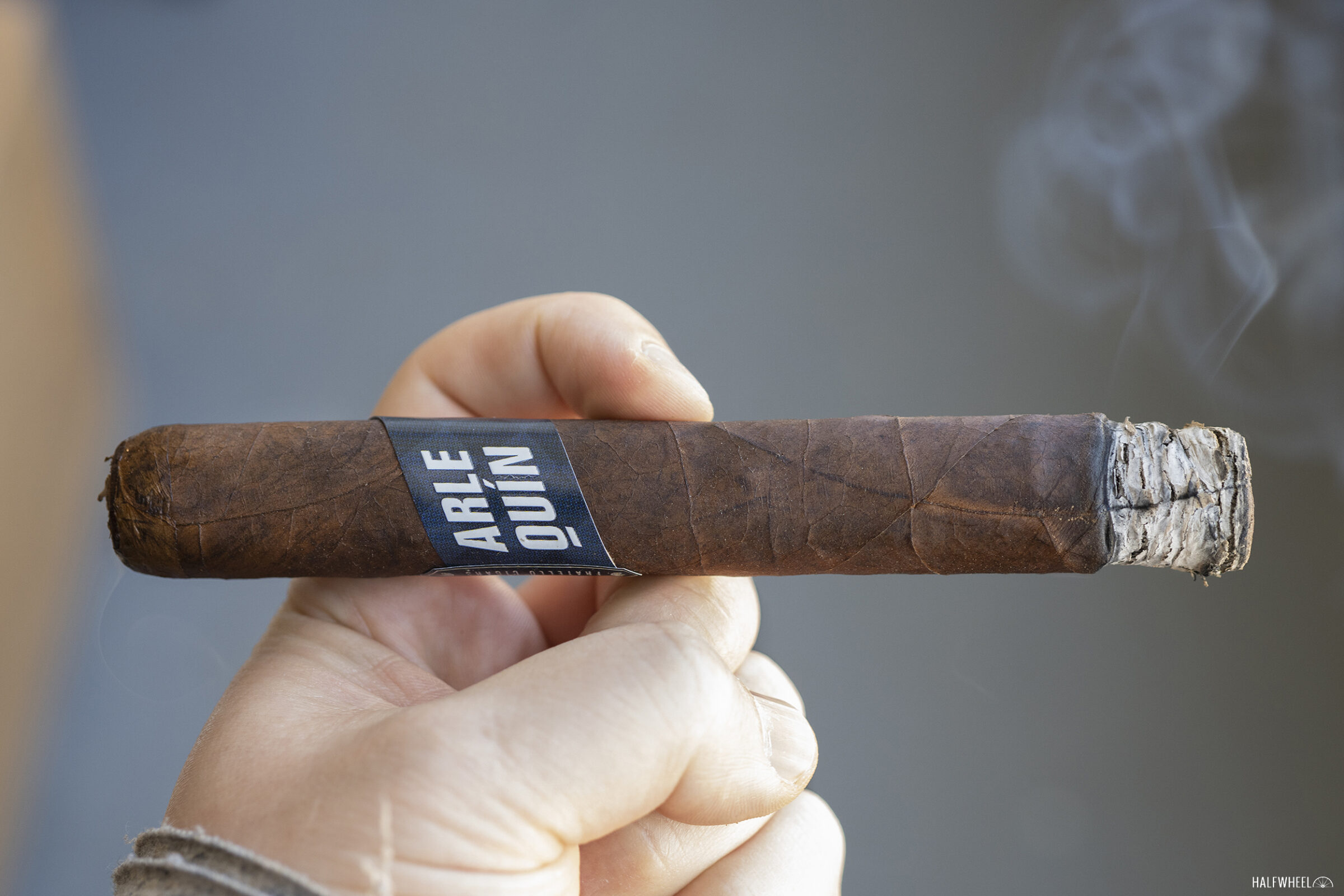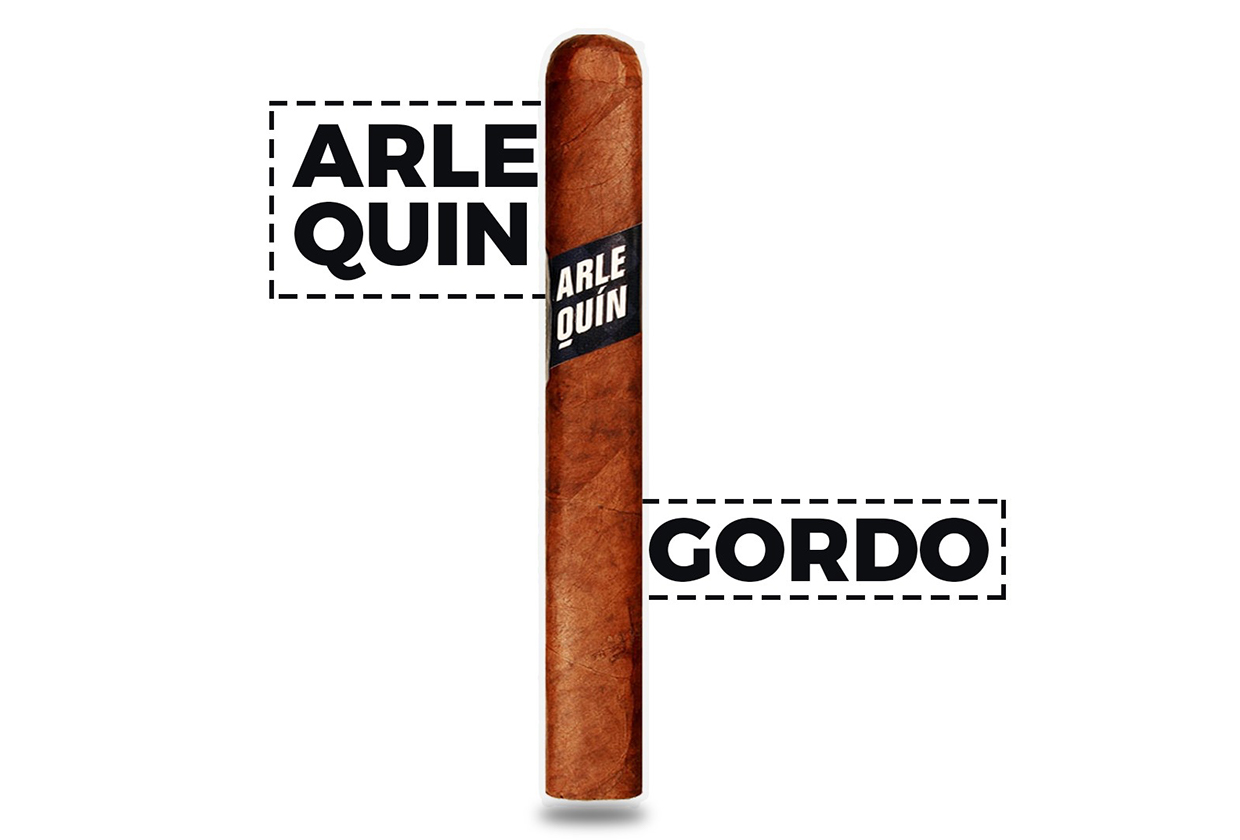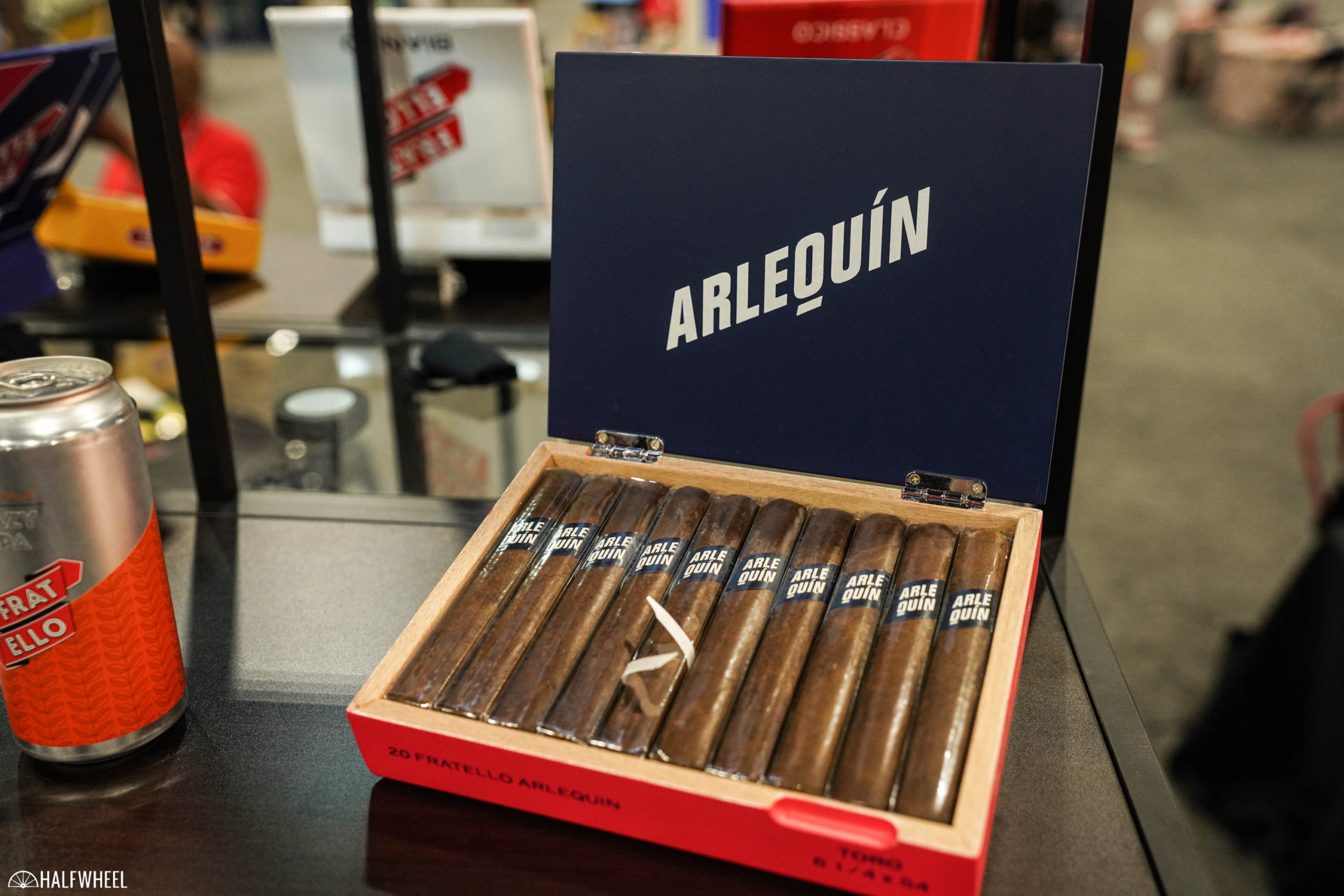This month, Fratello is scheduled to ship a new corona gorda size of the Arlequín. Given Fratello’s recent track record of delayed shipment dates, I am not all that optimistic that it will happen on time, but it does serve as a reminder to me to revisit one of the existing sizes of Arlequín.
In 2020, I reviewed one of the, as of right now, three regular production Arlequín vitolas: the Prensado Toro, a 6 1/2 x 54 toro extra that uses a Mexican San Andrés wrapper over an Ecuadorian binder and fillers from Nicaragua and Peru. This was one of two sizes released during the Arlequín’s widespread roll-out, though the blend actually debuted the year before. In 2019, Fratello used a five-pack sampler to test out two new blends—Arlequín and Sorella—before adding the blends as standalone lines in 2020.
In my December 2020 review of the cigar, I teed up the idea of doing a redux of this cigar at a later date:
The Fratello Arlequín Prensado Toro, or at least the ones I smoked, could use some dryboxing. As it stands now, it’s an aggressive profile that provides neither the complexity nor punch that would justify all of its shortcomings. I don’t think it’s permanently going to end up in this place, but it lacks much of what I have found to like in the best of Fratello’s offerings. I think most of Fratello’s releases require a bit of concentration to pick up the nuance, yet this is very much a bull in the china shop. This is certainly a cigar that has me intrigued for a redux review at some point in the future.
As I learned in high school, the time is now.
- Cigar Reviewed: Fratello Arlequín Prensado Toro
- Country of Origin: Nicaragua
- Factory: Fábrica de Tabacos Joya de Nicaragua S.A.
- Wrapper: Mexico (San Andrés)
- Binder: Ecuador (Habano)
- Filler: Nicaragua & Peru
- Length: 6 1/2 Inches
- Ring Gauge: 54
- Vitola: Toro Extra
- MSRP: $10.50 (Box of 20, $210)
- Release Date: Sept. 25, 2020
- Number of Cigars Released: Regular Production
- Number of Cigars Smoked For Redux: 1
Ever since I first saw this band, I’ve always liked it; it’s got a near mid-century modern look to the backside and the overall shape—something Fratello uses on other lines—is more interesting than most. As for the cigar, it’s got a great dark brown color with some minor amounts of a red clay-like color breaking through. The top part of the cigar is lighter than the bottom part, and the bottom section of the cap has a lighter color that creates a striping effect. The cigar has an aggressive rectangular box press and the bottom 40 percent of the cigar feels borderline hard to the touch. Once removed from cellophane, the Arlequín Prensado Toro’s wrapper has acidity and barnyard over some cedar, chocolate, fire-cured tobacco and paste aromas. The foot sees those fire-cured smells become more prominent with a less ammonia-like barnyard and leather underneath. Due to how unique the flavors are, it takes me a few cold draws to figure out what’s going on with the flavor. There’s a chicken flavor that reminds me of something akin to instant ramen seasoning, some unripe red berries, unsweet oatmeal, whole-grain bread, a bight flavor that reminds me somewhat of floral flavors, and some mild amounts of a white gravy flavor. Yes, it’s a strange cold draw.
After the unique flavors I found on the cold draw, I’m disappointed to get a low volume of smoke on the first puff. As such, the flavors aren’t all that developed: a smooth mixture of sweet cedar and earthiness. Fortunately, after a handful of puffs, smoke production is solidly in the range that I’d like. The profile seems isolated on my tongue with a sharp earthiness accented by hard bread crust flavors, acidity, a flavor that reminds me of stale bottled water, dark chocolate and damp earthiness. There’s a brightness to the flavors that gives an artificial sense of sweetness, though truth be told, there’s not all that much sweetness. It finishes with earthiness, leather, bottled water flavors and a grittiness that, at times, seems like it has some black pepper. Retrohales have leather, berries and nuttiness—all on equal footing. The finish is sharper, with harshness on the tongue, a drier earthiness all over the mouth and a mild amount of pepper. Flavor is medium-full, body is medium-full and strength is medium. While I am not required to make any deductions for construction, the smoke production is inconsistent and the ash isn’t the prettiest in the world.
Touch-ups are needed at multiple points of the second—and final—third(s) of the Fratello Arlequín Prensado Toro. Flavor-wise, earthiness gets stronger in the second third, now infused with nuttiness and some woody flavors. At times, the flavor can get dry, other times there’s a generic sugar sweetness, and some puffs even combine the dryness and sweetness. The more smoke volume, the more the bottled water flavor emerges, acting similar to a creaminess that ties the other flavors together. Secondary notes also include a mild lemon tea flavor, meatiness and some bitterness. The finish has less sharpness, though there’s a concentrated harshness on the tongue. Remnants of thyme, leather and ketchup join the dry and sharp sensations as the aftertaste emerges. Retrohales have some wheat bread and a touch of floral flavors, though I’m still not seeing all that much change compared to the main flavors. The finish adds a velvety bitterness along with something that reminds me of balanced nuttiness—mild and bitter macadamia nuts come to mind—along with under-extracted coffee flavors. Flavor is closer to full, body is medium-full and strength is medium-plus. The profile gets spicier in the final third before hickory, generic woodiness and nuttiness beat out the earthiness for the top spot. Leather, creaminess, bread flavors and a lemon-like acidity round out the secondary notes. The finish is rather similar, though saltiness and lemon become more prevalent. The coffee flavors become more apparent in retrohales of the final third and there’s some added toastiness, though eventually, the core flavors of woodiness and earthiness make it difficult to tell the difference between a retrohale and a non-retrohale puff. Smoke production remains an issue, though I don’t always need to use a lighter to get more out of the cigar.
Fratello advertises on halfwheel.
When it comes to guessing how a cigar will age, I probably am wrong more than I’m right, but rereading the summary of the original review leads me to believe I got this one correct. While it’s still got room for improvement, my issues with the Arlequín smoked for this redux review are related to combustion, not flavor. The profile is rich, complex and interesting. It also shows that there’s plenty of life left. If the second half combustion issues get fixed—I counted five touch-ups after the first third—this cigar might have been the best Fratello I smoked. There are still times when the flavor gets a bit harsh or bitter, but those are minor concerns that apply to all but the very best cigars I smoke in a given year. Furthermore, I'd predict the flavor scores better without the combustion issues. If you’ve been aging some of these Arlequíns since 2020—or perhaps the 2019 version—now seems like a great time to light one up. After all, the time is now.




